Planting a bush in your garden is an excellent way to add structure, colour and even support biodiversity. Bushes, whether with evergreen foliage or deciduous, offer a variety of shapes and flowerings that enrich the landscape throughout the year. By planting them in the ground you allow them to develop a robust root system, encouraging better growth and greater resilience to climatic conditions. Follow this detailed guide to succeed in planting your bushes and ensure their flourishing.
Why plant a bush in the garden?
Planting a bush brings structure by creating volumes and harmoniously defining garden spaces. But bushes also bring beauty thanks to foliage, flowering or decorative fruit that change with the seasons. In addition, bushes often provide a refugium and food for pollinating insects and birds, thus contributing to the garden’s ecological balance.
In open ground, bushes have the space needed to spread their roots, ensuring vigorous growth and better nutrient uptake, which favours abundant flowering. Their deep rooting also gives them greater autonomy, strengthening resistance to disease and climatic variations.
However, planting a bush in a pot is of course possible, but requires a suitable container with good drainage and a rich substrate to ensure development. Regular watering and periodic feeding are also essential to compensate for the restricted space and maintain vigour. Pot planting is a special case: if you want to know more, follow the ABC of pot planting by Gwenaëlle.
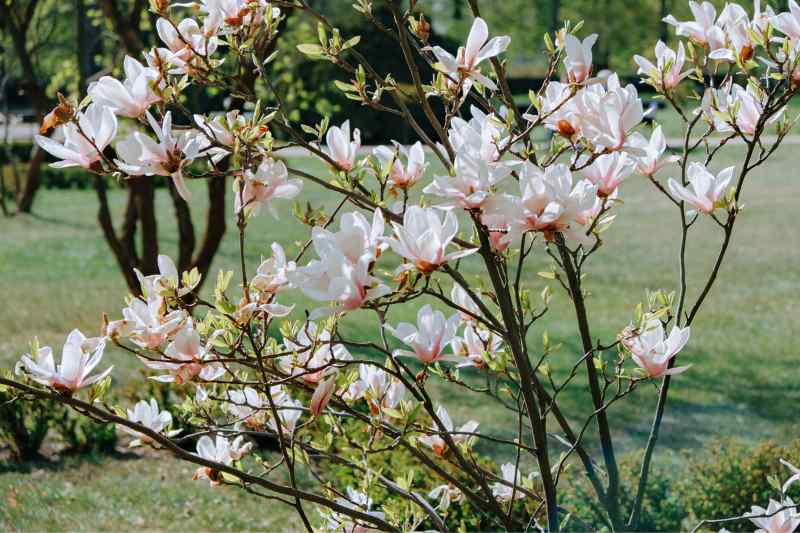
When to plant a bush in the garden?
- Bushes with bare roots (for deciduous bushes): plant them in autumn, between October and November, or in early spring, in March–April. These periods allow roots to establish before climatic extremes.
- Container-grown bushes (deciduous, evergreen and conifers): they can be planted throughout the year, but prefer spring or better still autumn for improved establishment. In autumn, cooler air temperatures and still-warm soil favour rooting.
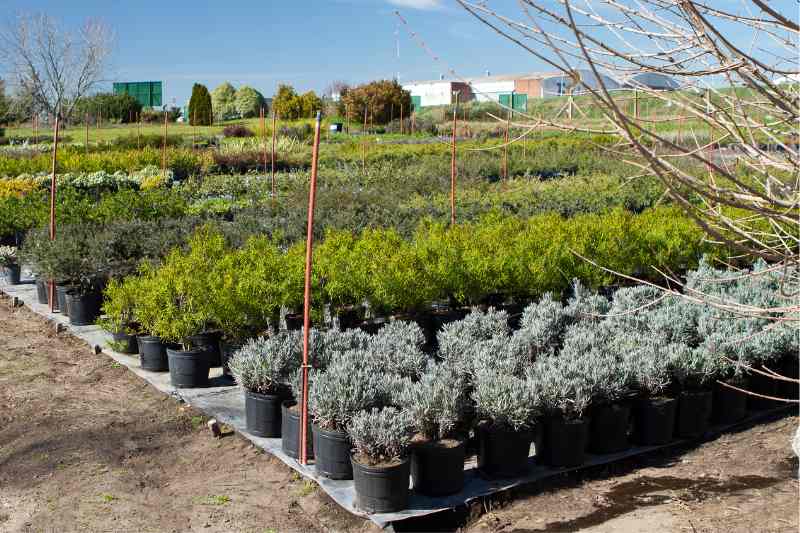
Where to plant a bush?
- Exposure: most bushes appreciate a sunny aspect, but some prefer partial shade. Check the specific needs of the chosen species.
- Soil type: as a rule, well-drained soil is essential. If your soil is heavy or clayey, consider improving drainage by incorporating compost or coarse sand.
- Soil moisture: most bushes need a fresh but not waterlogged soil. Make sure the soil retains enough moisture without being saturated.
Of course, each essence has specific needs and you should check beforehand the growing conditions of the bush you wish to plant.
Oli's quick note: combining bushes with ground-cover perennials, grasses or bulbs helps structure a border while limiting root competition and promoting biodiversity. These combinations create a natural balance by protecting soil, attracting pollinators and providing staggered flowering throughout the year. To learn how to create a bush border, follow Jean-Christophe’s good advice.
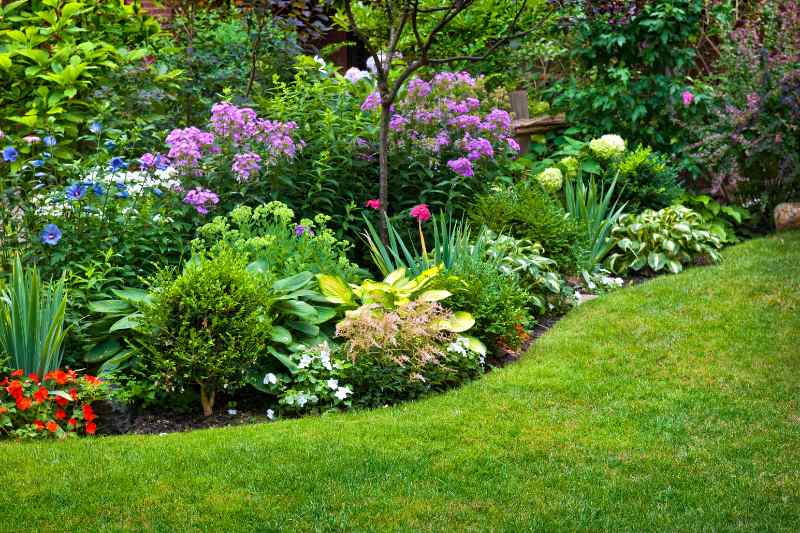
Necessary equipment
- A spade or a digging fork: for digging the planting hole.
- A pruning shear: to trim damaged roots or excess branches.
- A watering can
- Compost or an organic amendment: to enrich soil and encourage rooting.
- Gardening gloves: to protect hands during handling.
- A stake and soft ties: if the bush requires temporary support.
Practical steps to plant a bush in the garden
- Soil preparation: loosen soil to a depth of 30–40 cm and incorporate compost to improve structure and fertility.
- Digging the planting hole: dig a hole 2–3 times the diameter of the rootball and as deep as the rootball’s height.
- Preparing the bush:
- Container-grown bushes: gently remove plant from its pot. If roots form a root ball, tease them slightly to encourage spreading. Bathe the rootball in its growing pot in a large container filled with water.
- Bushes with bare roots: prune damaged roots and coat them by dipping in a mix of soil, water and compost (or manure) to encourage establishment.
- Positioning the bush: place the bush in the centre of the hole, ensuring the collar (transition zone between roots and stem) sits at soil level.
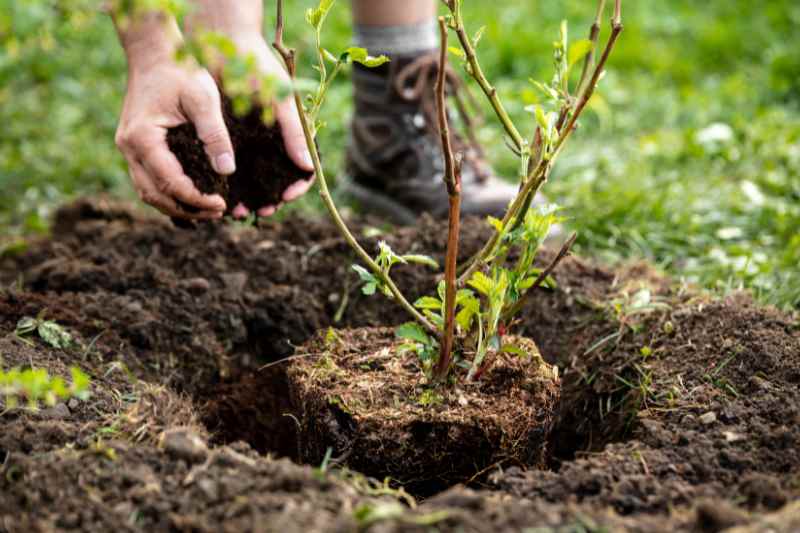
5. Filling the hole: refill the hole with the excavated soil, tamping lightly to remove air pockets.
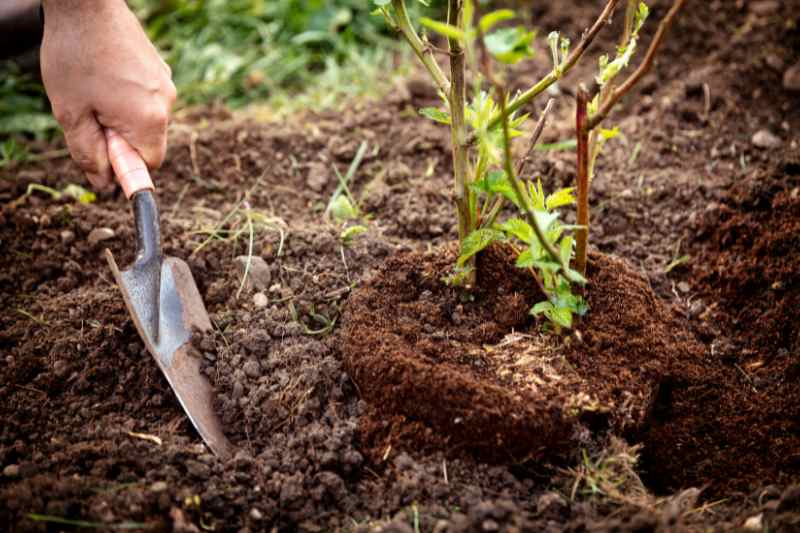
6. Watering: water generously to ensure good contact between roots and soil.
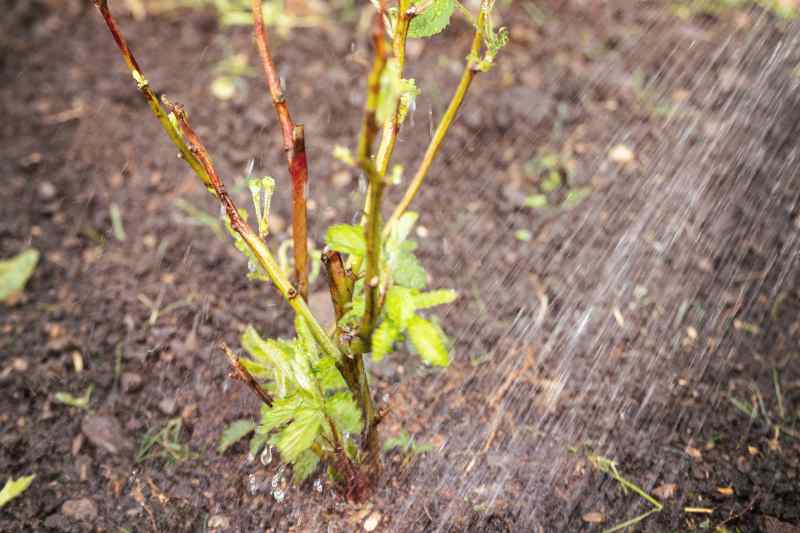
7. Staking: if necessary, install a stake to support the bush, especially in windy areas. Attach with soft ties to avoid damaging the stem.
After planting: care and maintenance of the bush
- Watering: keep soil moist during the first weeks by watering regularly, especially in dry periods. It is recommended to water a bush for the first two years until it is well established.
- Mulching: apply a layer of organic mulch around the base of the bush to conserve moisture, regulate soil temperature and limit weed growth.
- Pruning: after the first year, prune the bush according to its specific needs to encourage a balanced habit and optimal flowering. Over time, bushes develop their structure and spread, requiring regular pruning to balance growth and ensure abundant flowering. Appropriate maintenance, including removing dead wood, feeding and disease control, preserves vigour and ensures a harmonious habit in the garden.































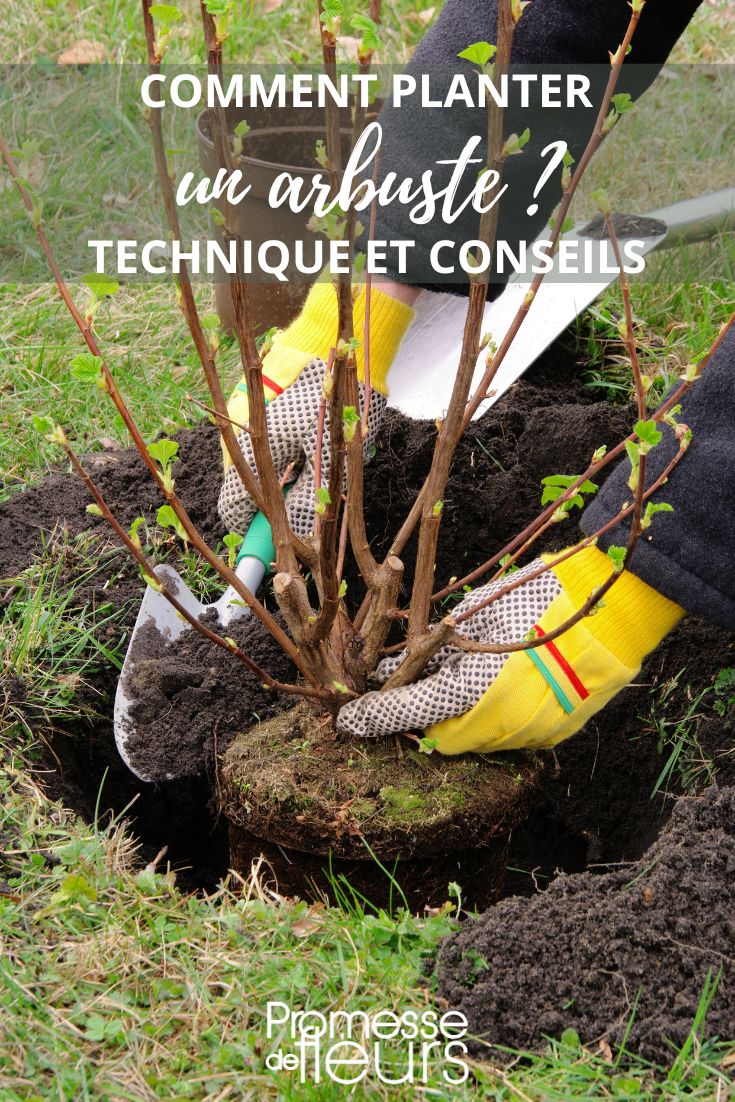
Comments